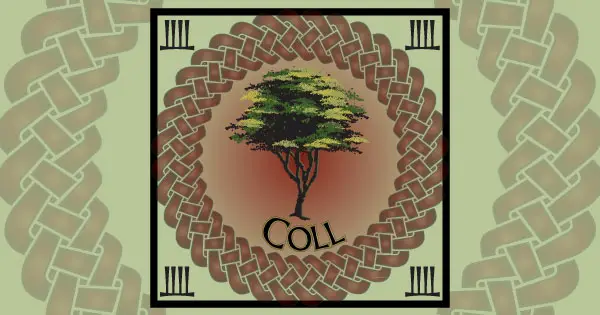Hazel is the tree found at the center of the Otherworld, or the World’s End depending on the myth.
In Celtic mythology, nine magical hazel trees hang over the sacred Well of Wisdom dropping their hazelnuts into the well.
The water of the well flows into streams where the magical nuts are eaten by the Salmon of Wisdom.
Sacred nut
Those who consume either the nuts or the fish will gain prophetic abilities. Often stories would tell of a legendary hero sent on a quest to the Well at the world’s end to catch a sacred nut before it reached the salmon of wisdom.
According to folklore, hazel could often be found with the apple and the hawthorn at the borders between worlds where magical things are believed to occur.
Guardians of the hazel in Ireland and Britian
In many myths the hazel has a guardian. In Ireland, Bile Ratha, the poetic fairy lives in the hazel. In Scotland the hazel guardian is the mythical Hind Etin and in Northern England the guardian of the hazel is called Melsh-Dick.
It is considered extremely bad luck to chop down a hazel tree and was once said to be punishable by death.
Coll, Corylus, C – The Hazel is associated with wisdom. It is the ninth letter in the ogham alphabet, Coll and the ninth month in the Celtic tree calendar.
In Greek and Roman mythology the hazel is associated with Hermes and Mercury who represent intelligence. Hermes staff was said to be made of hazel wood.
This is a practice followed by some druids who prefer a hazel staff over the traditional oak.
Hazel staffs were often seen as a sign of authority and the old English word for hazel, ‘haesl’ means ‘baton of authority’.
In British folklore Hazel is associated with love and fertility. In England a new bride would traditionally be greeted with a gift of hazels and up until the mid-twentieth century country folk believed good show of hazel catkins foretold a year with lots of babies.
